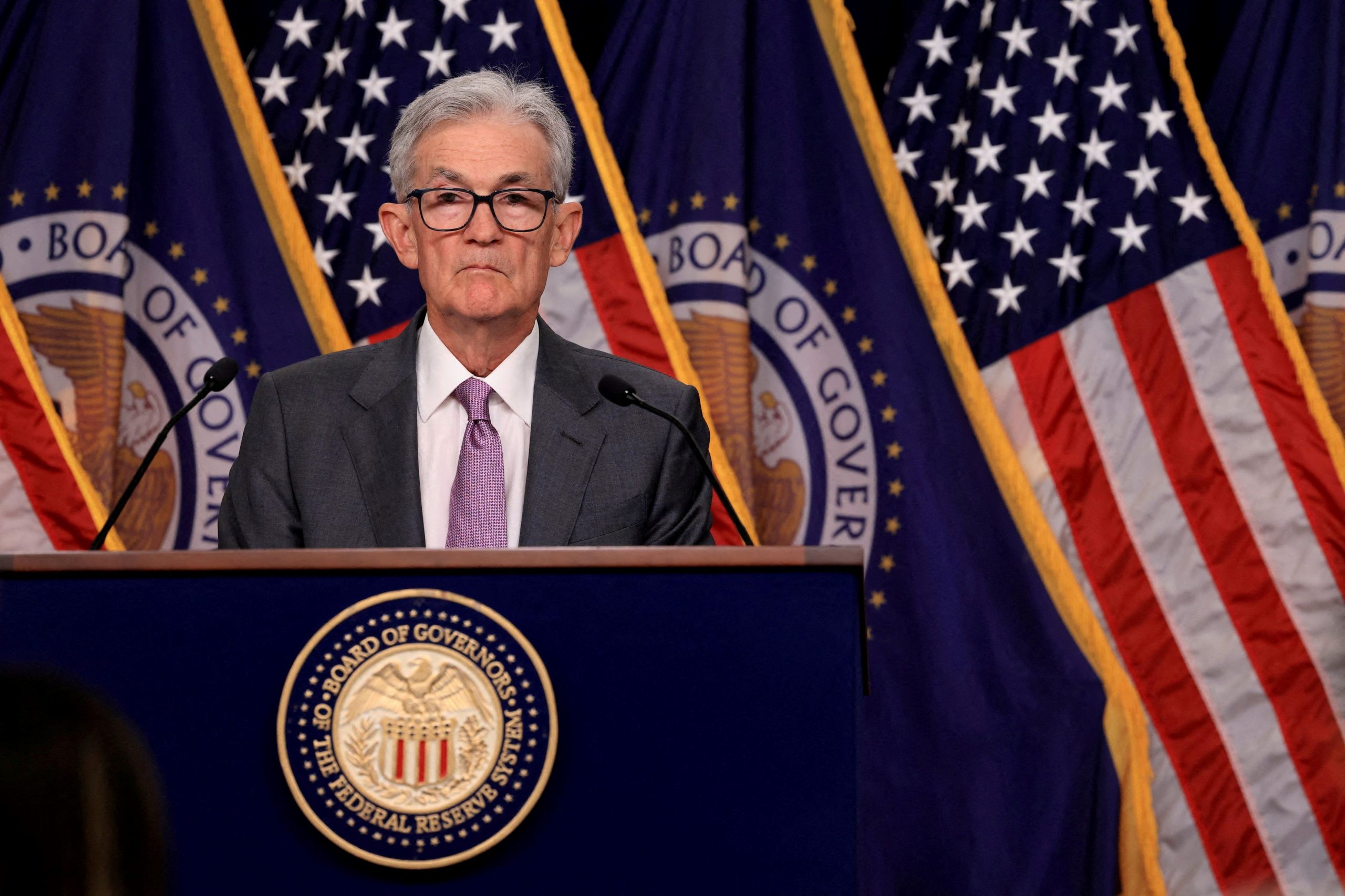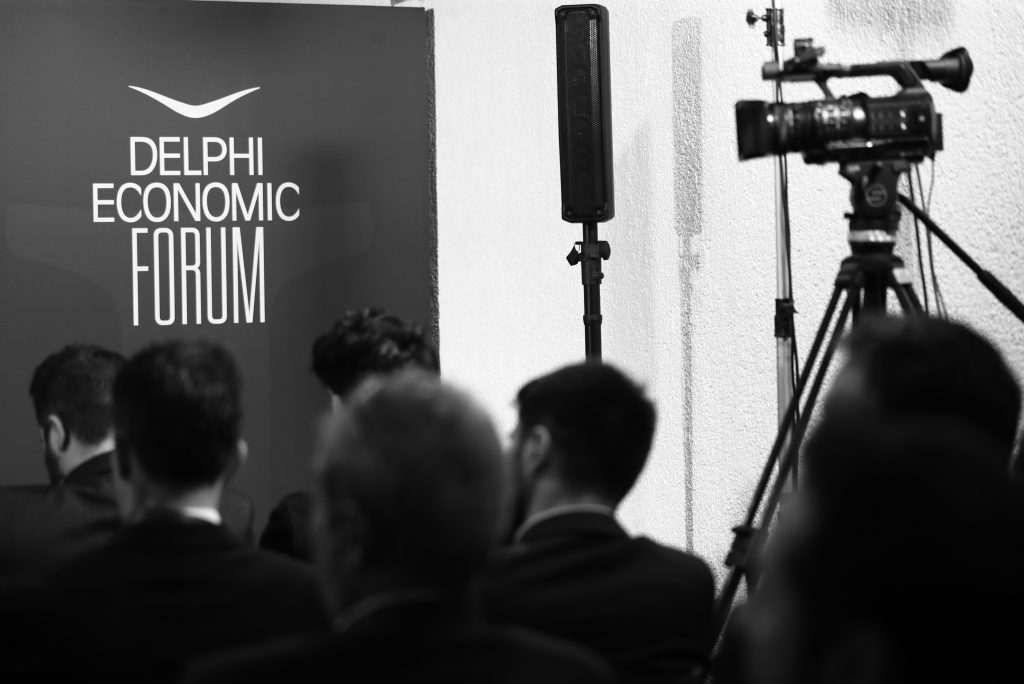By opening the door wider to an interest-rate cut in September, the Federal Reserve (FED) is on a collision course with the presidential election.
For a central bank that judiciously aspires to stay above the fray of partisan politics, confronting a potential policy shift around election time amounts to a lose-lose. Delivering a rate cut ahead of the election could rile up Republicans and former President Donald Trump, but withholding a needed reduction could undermine the economy and upset Democrats.
The awkward optics give extra incentive for central bank officials in the coming weeks to set expectations for and explain the reasoning behind any sequence of rate reductions they could initiate at the Fed’s next meeting, in mid-September.
Fed Chair Jerome Powell continued a long-running effort to lay such groundwork on Wednesday when he said his attention was squarely trained on ensuring the Fed could bring down inflation while preventing past rate increases from tipping the economy into recession.
“Our focus is strictly on that,” Powell said.
He fiercely disputed accusations that the Fed would be influenced by politics. “We never use our tools to support or oppose a political party, a politician or any political outcome,” Powell said. “Anything that we do before, during or after the election will be based on the data, the outlook and the balance of risks, and not on anything else.”
The Fed lifted rates from near zero two years ago and quickly reeled off the most rapid interval of rate increases since the early 1980s to combat inflation. Officials last raised their benchmark short-term interest rates in July 2023 to around 5.3%, a two-decade high.
Rate rises have coincided with notable declines in inflation, which fell to 2.5% in June from 7.1% two years before, using the Fed’s preferred gauge. The Fed targets 2% inflation over time.
Because Fed actions can alter economic outcomes, they can indirectly have important political consequences, too. Economic models say that because bond investors already expect at least two and possibly three rate cuts this year, the exact meeting when the central bank cuts rates should have little immediate effect on the labor market, growth and inflation.
But consumers with credit-card debt and businesses that rely on short-term debt won’t benefit until the Fed cuts rates. Moreover, such policy shifts are symbolically important and could boost consumer sentiment. Also, with a September rate cut now widely expected by markets, borrowing costs could rise and other financial conditions could tighten if the Fed failed to follow through.
Republicans turn up the heat
In an interview with Bloomberg Businessweek in June, Trump said the Fed’s current rate setting is “very tough” for the economy but that moving to lower rates before the election is something central bank officials “know they shouldn’t be doing.”
Trump allies have signaled that they will turn up the political heat on Powell if he moves ahead with a rate cut in September. They fear it could boost sentiment and hand Democrats a triumphant talking point about the economy.
“It would have minimal impact if they waited until November—after the election was over,” said Michael Faulkender, an economist at the Treasury Department during the Trump administration.
The Fed’s next meeting is Sept. 17-18, and the one after that is set to begin the day after the Nov. 5 election.
Faulkender, who is now chief economist at the America First Policy Institute, a pro-Trump think tank, said starting a rate-reduction campaign before the election would tarnish the Fed’s credibility.
Even if Trump heaps criticism on the Fed for cutting rates in September, some Republicans say any bellicosity should fade if he is elected because he will want the economy to be strong.
“There is a good argument that Trump will quickly forgive the Fed…if he wins, and in fact will be happy that they committed themselves to rate cuts just as he is coming into office,” said Marc Sumerlin, a former economic adviser to President George W. Bush.
Medicine that tastes bad
Three years ago, many Democrats who were trying to pass ambitious government-spending programs on Capitol Hill predicted that the initial burst in high prices—which posed a mortal threat to that legislative agenda—would fade on its own.
Now, some have voiced alarm that the presidential campaign of Vice President Kamala Harris won’t benefit from the inflation slowdown that has unfolded recently because the Fed’s interest-rate medicine has been as unpalatable as the price pressures it has tried to corral.
Higher rates have made it more expensive to purchase big-ticket goods such as cars and homes, which are typically bought with debt. “It has really put items that would be affordable, given the wage gains that American workers have seen over the course of this recovery, out of reach,” said Kitty Richards, who oversaw stimulus spending at the Treasury Department from 2021 to 2022.
Former Biden administration officials and some former Fed officials have argued in recent weeks that the Fed should cut rates now to prevent any unnecessary weakness in the economy and maximize the odds of an elusive soft landing.
“Fiscal and monetary policy have worked to create an extraordinarily strong recovery. The finish line is in sight, and it would be tragic…for the Fed to stumble and fall with 0.1 miles left in the marathon,” said Bharat Ramamurti, a former economic aide at the White House.
In a letter urging Powell to cut rates on Wednesday, three Democratic senators, including Massachusetts Sen. Elizabeth Warren, said that because rates are unnecessarily high, failing to lower them would amount to “succumbing to political threats” from Republicans.
Changes close to an election aren’t unusual
Fed officials say taking the election calendar into account would, perversely, compromise their nonpolitical approach. “Congress has, we believe, ordered us to conduct our business in a nonpolitical way at all times, not just some of the time,” Powell said Wednesday.
Because inflation has come down a little faster than officials anticipated at their June meeting while the jobless rate is creeping higher, the Fed has a strong case to cut rates soon, said Eric Rosengren, who was president of the Boston Fed from 2007 until 2021.
“The nonpolitical thing to do is, if you think policy will be too tight going into the end of the year, you should ease,” he said. “It’s a political action to avoid taking what you think is the appropriate policy.”
History shows that it isn’t unusual for the Fed to make policy changes around an election:
- The central bank cut rates by a half-percentage point in July 1992, and then by a quarter point that September, as the economy struggled to recover from a recession. The July cut came days after President George H.W. Bush, who was seeking re-election, called for lower rates. (Bush lost and, years later, blamed then-Fed Chairman Alan Greenspan for keeping rates too high.)
- In May 2000, the Fed raised rates to a nine-year high and held them there until January 2001, when it began lowering rates rapidly.
- The Fed started lifting rates in June 2004 and did so at every subsequent policy meeting while President George W. Bush faced a close-fought re-election battle.
- The Fed slashed rates throughout 2008 as a slowdown in the housing market spawned a major financial crisis in the weeks before the election.
- In September 2012, officials launched a controversial and novel bond-buying stimulus program while President Barack Obama sought re-election.
- In September 2020, the Fed made bold promises to hold rates at a low level after the economy emerged from the pandemic amid fears that the central bank might be out of ammunition.
“In all of my experience, the way that the Fed has approached this is to keep their heads down, think about what the right policies were, and when they needed to make adjustments, they did what was necessary,” said Charles Evans, who as a senior economist and later president of the Chicago Fed attended rate-setting meetings between 1995 and 2022.



